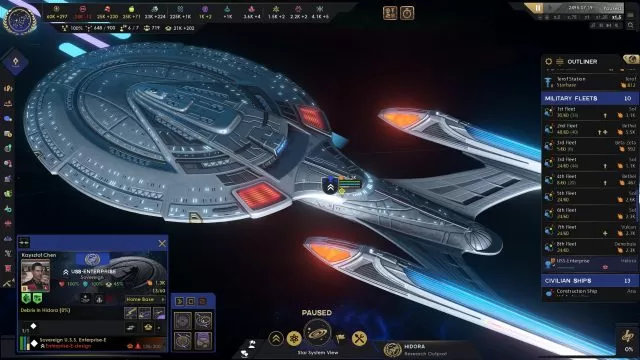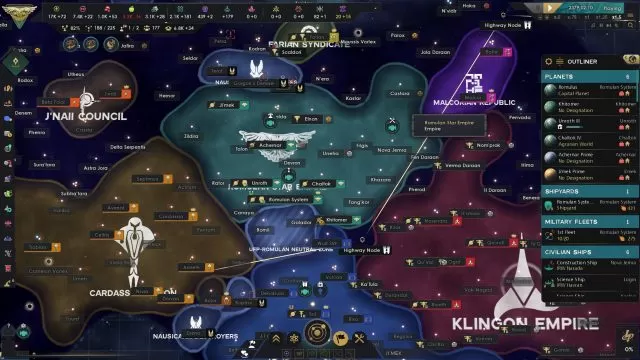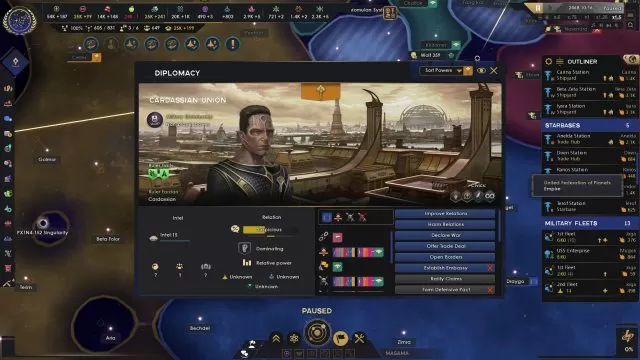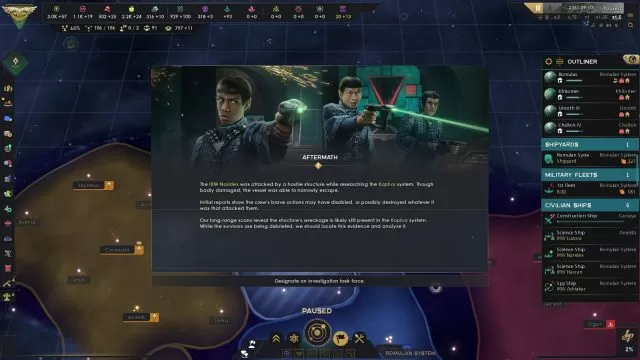Star Trek: Infinite Review – Warp Core Breach
You ain’t going to believe this, but the last decent grand strategy game involving Star Trek is a quarter of a century old. Star Trek: Birth of the Federation (1999), published by the original MicroProse, was riding the wave of the peak Trek popularity, with Voyager and Deep Space Nine shows in the background, wrapping things up in their final seasons. It was a good time to be a classic Trekkie. You know, the kind who had to make an effort to connect with like-minded fools on IRC or conventions.
Star Trek: BotF was a flawed game by most metrics. It suffered from a devastating memory leak that made it unplayable after a while, forcing you to restart it a dozen times in every session. Romulans, having the first strike ability in every battle were overpowered as hell. With a sufficient fleet, you could blast The Borg cubes with minimal effort, rendering the late-game crisis impotent. The Federation’s morale suffered disproportionally when fighting, even if you were winning a defensive war. And so on. But none of it mattered. BotF was the only game in town, besides bulky board games, that allowed me to fulfill my urge to rule the Alpha quadrant.
To boldly go where someone else already went

If you wanted to play more modern Star Trek-themed 4X games, you had to resort to mods for Sins of a Solar Empire or Stellaris. Star Trek: Infinite represents the conceptual evolution of that philosophy. It was crafted by pasting the Star Trek stuff over the heavily modified Stellars strategic framework. Total conversion, as people used to call this kind of work. Much like Birth of the Federation, Star Trek: Infinite suffers from plenty of bugs and imbalances. That’s unfortunate, but Paradox Interactive tends to slowly fix their games post-launch.
Star Trek: Infinite is set in the Prime timeline, just after the Khitomer massacre in the TNG era. Don’t confuse it with the Khitomer accords from ToS, this Khitomer had no happy ending. The surprise attack on Klingons by Romulans sets the stage for a new galactic showdown between usual suspects. Choosing between the United Federation of Planets, Klingon Empire, Romulan Star Empire, or Cardassian Union, you’ll be guiding your faction to diplomatic or military victory. The map combines Alpha and Beta quadrants, with hundreds of star systems, minor civilizations, spaceborne hazards, and adventures waiting to be discovered. Like in Stellars, you have plenty of initial options for spicing up things. Or watering them down. Apart from modifying the overall difficulty, you can tweak the number of habitable worlds, minor galactic powers, endgame crisis strength, and much more.
All good things

At the start of every game, the factions are canonical, but you can modify them to a major extent by picking an alternative path in the mission tree. Federation needn’t stay the pseudo-European Union entity that can only wage a defensive war until the stars go dim. If you opt for a conquest path down the line, you can evolve it into the evil equivalent from the Mirror, Mirror universe. Some events are fixed, like Romulus’s destruction due to its sun going supernova. You can, hovewer, alter the canon even at this junction, opting for accepting the Federation’s help instead of staying isolated. Cardassians and Klingons have similar trees and their unique branching paths. The Federation tree, hovewer, is by far the most detailed one. Devs need to address this blatant disproportionality.
Separate from the missions and their far-reaching, civilization-defining consequences, there are also traditions and ascension perks. Those work pretty much the same as in Stellaris. Traditions mostly enhance specific attributes, from the fire rate of ships to the population amenities usage. After completing every tradition group, you’ll unlock one Ascension Perk, further evolving your civ. Some empire-altering events can be found by studying anomalies, but the powerful stuff, found in Stellaris archeological digs, is currently missing. Anyhow, you won’t lack the means for guiding your faction on the desired path. Your only obstacle could be the steep learning curve.
Infinite complexity

Make no mistake, Star Trek: Infinite is a super-complex game. If you have a couple hundred hours of Stellaris experience, you’ll slide into the game like in a pair of old shoes. But if you don’t, be prepared for long sessions of trial and error. Even if some systems are simplified compared to Stellaris with all Expansions and DLCs, this is still the second most complex 4X on the market.
Star Trek: Infinite differs from Stellaris in several important facets, the most important being space travel. Ship use warp drives for travel which are not defined by fixed starlanes, so there are no chokepoints on the map worth fortifying. Your foes can literary come from any direction, and that means the fleet-based, mobile defense is the only way to survive. You will, of course, build weaponized starbases in key systems, but their strategic combat utility is limited to delaying the enemy. There are also a few “galactic highways”, enabling super-fast travel between fixed points.
The Trouble with Tribbles

Bugs, bugs, and more bugs. Star Trek: Infinite falters when trying to mix the randomness of the procedural generation with fixed canon. I had two separate admiral Rikers on one occasion, both leading their respective fleets. Once, I had recruited Commander Data, but he died from old age at 71. I also had Jean Luc Picard, but I got him killed during the skirmish with Cardassians, leaving me unable to complete an important Borg sphere storyline. Imagine my joy when another Jean Luc spawned fifty years down the line!
Bugs like these are hilarious and often harmless, but others can be game-breaking. During my Klingon campaign, I suffered from a catastrophic resource drain, unrelated to several pops, ships, or any other factor. When reloading the save game, restarting the PC and the game failed to remedy the situation, I threw the promising campaign into the trash. Those were four hours I’ll never get back.
Like almost every Paradox Game under the sun, you’ll do well if you wait for a couple of months’ worth of patches before committing to Star Trek: Infinite. There’s a solid game under the big pile of bugs, waiting to be properly enjoyed. I sincerely hope it will eventually emerge.
Highs
- Star Trek mixed with Stellaris.
- Lots of opportunities to alter the Star Trek canon and mold the galaxy into a monster of your making.
- Reasonably priced.
- It’s published by Paradox, so long-term support is a given.
Lows
- Bug-ridden to the point of bursting.
- Only the Federation mission tree seems complete.
- Extremely steep learning curve.
One COMMENT
Comments are closed.


Two Rikers is not a bug, the second one came from a transporter accident in the show.